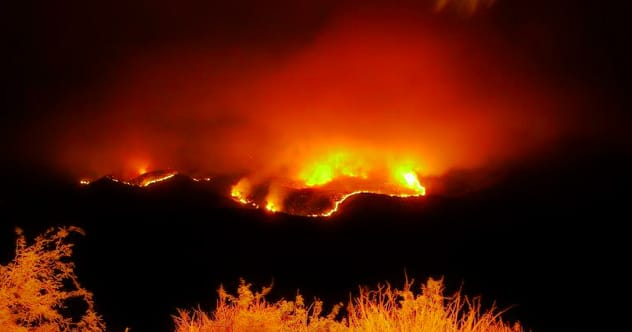Spontaneous fires might seem like a rare occurrence, but they’re surprisingly common both above and below ground. Often fueled by underground sources like coal, gas, or oil, these ‘eternal flames’ can burn for centuries, yet remain relatively unknown. Let’s explore ten such fascinating sites around the world.
Chestnut Ridge Park
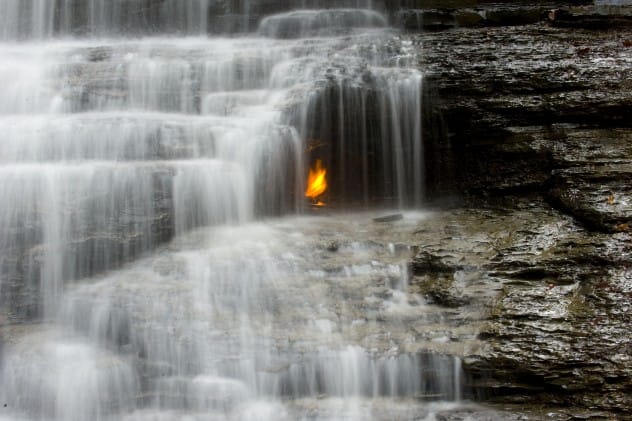
Located behind a waterfall in Shale Creek Preserve, south of Chestnut Ridge Park in Northwestern Pennsylvania, lies a peculiar natural flame. What makes it even more captivating is that you can view it through the cascading water. Legend has it that Native Americans first ignited this flame thousands of years ago.
Although scientists have identified the fuel source as ethane and propane, the origin and pathway of these gases to the rocky enclosure remain a mystery. Studies suggest that the ground isn’t hot enough to sustain the fire, nor is the shale deposit at a suitable depth to fuel it. The Chestnut Ridge Park flame continues to be a beautiful, unexplained phenomenon.
Mount Chimaera
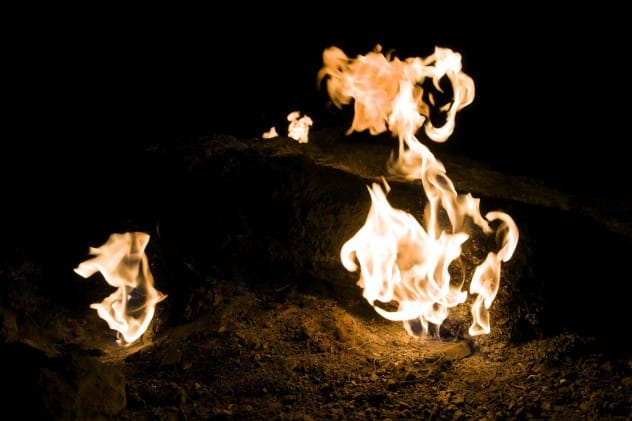
Mount Olympos, near Antalya, Turkey, features flaming gas seeps that may have inspired the myth of the Chimera. It could also be the volcanic area described by Pliny the Elder, noted for a flame that burns day and night.
These fires have burned for at least 2,000 years, once guiding ancient mariners away from rocky shores. Methane gas, seeping through ophiolite—seabed rock pushed onto the land—is believed to be the fuel source for this eternal flame.
Jharia Coalfield
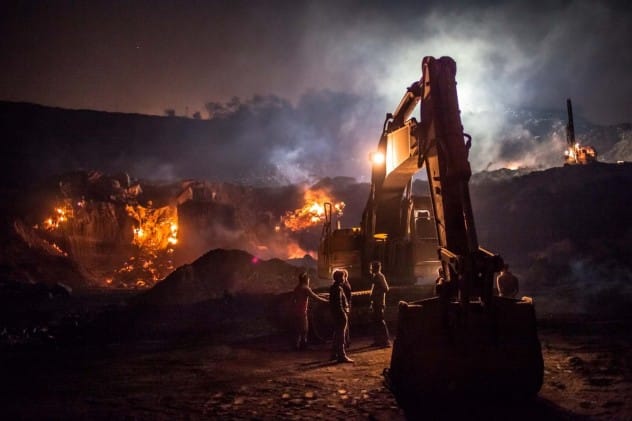
Jharia, India, is home to one of the world’s largest coal mine fires. At least 70 different fires burn as one, releasing tons of carbon dioxide into the atmosphere annually. This makes India, the fourth-largest greenhouse gas emitter, even more polluted.
Coal mining in Jharia began in the late 1800s, with the first fire reported in the 1920s. The problem escalated in the 1970s when mining companies switched to above-ground practices, leaving coal exposed to oxygen. Soft coal can spontaneously combust at temperatures as low as 40°C (104°F). These fires are nearly impossible to extinguish and have led to ground erosion, swallowing houses and railroads. In 1995, a riverbank collapse due to an underground fire flooded a mine, killing 78 workers.
Burning Mountain
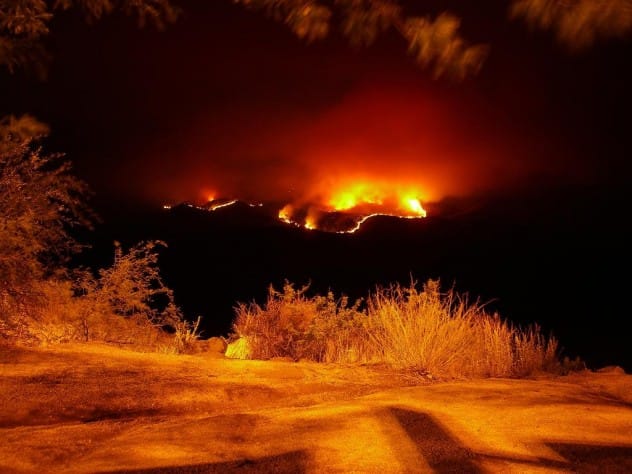
The underground coal fire creating “Burning Mountain” (Mount Wingen) in New South Wales, Australia, likely started from lightning or spontaneous combustion. It has been burning for at least 6,000 years, possibly making it the oldest known continuously burning coal fire.
The fire moves southward at about 1 meter (3.3 ft) per year. Over its lifespan, it has traveled at least 6 kilometers (3.7 mi). At this rate, it would take around 255,000 years for the fire to reach the outskirts of Sydney, approximately 280 kilometers (173 mi) away.
The Smoking Hills
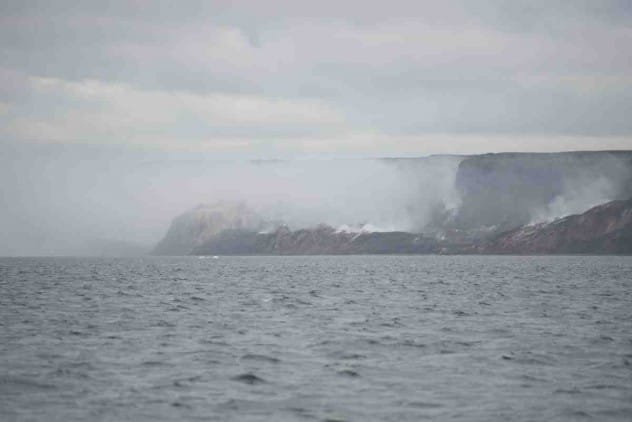
In 1850, Captain Robert McClure, searching for the lost Franklin Expedition in the Arctic, rediscovered the Smoking Hills on Cape Bathurst. These hills, first noted by Franklin in 1826, feature smoke from fires in areas with little vegetation.
The local Inuit called it the “land of sour water” because the burning underground oil shale contaminates the water with acidity and heavy metals. A rock sample taken by McClure’s crew burned through his desk, confirming the presence of these unusual fires.
Water And Fire Cave

Taiwan is known for its mud volcanoes and natural springs. Near Biyun Temple, the “Water and Fire Cave” features methane gas produced by these volcanoes. The gas bubbles fuel a continuous fire, creating the illusion of fire burning on rock and water.
Though the flames have diminished from their original three meters (10 ft) in height, they remain impressive. Discovered by a monk in 1701, this flame has burned continuously for over 300 years.
Mrapen
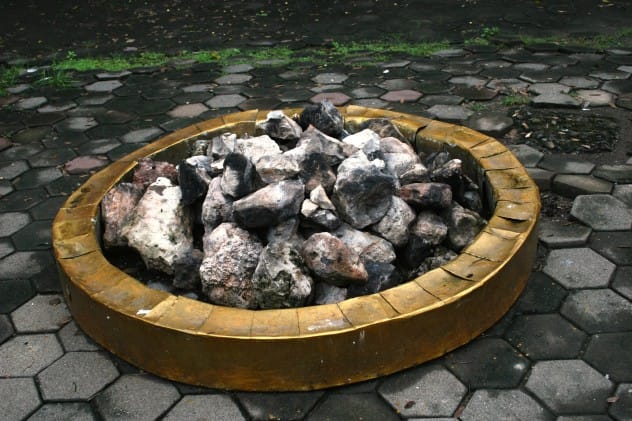
Indonesian legend tells of Sunan Kalijaga, one of the “Nine Saints of Islam,” who, tired and cold, stuck his stick into the ground in Mrapen village, bringing forth a flame to warm his followers. This flame is sacred in Javanese culture and is used to light “eternal flame torches” for Indonesian sports tournaments.
First recorded in the 15th century as an unextinguishable flame, it continues to burn, fueled by natural gas leaking from deep underground.
The Brennender Berg (‘Burning Mountain’)
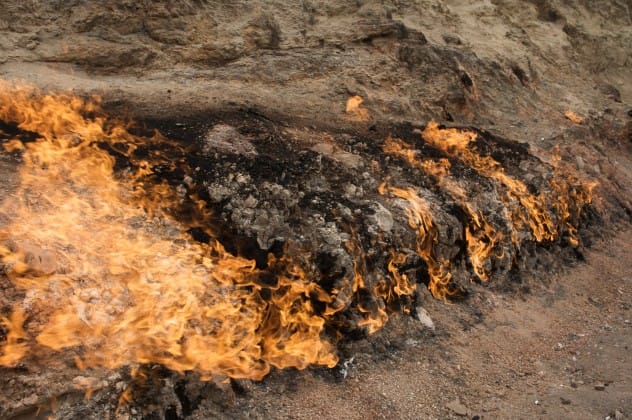
The burning coal seam at Brennender Berg in Saarland, Germany, ignited in 1688 and has been burning ever since. Legend says a shepherd lit a fire near a tree stump, which spread through the roots to the coal seam.
Johann Wolfgang von Goethe visited Brennender Berg in 1770 and described dense steam rising from the crevices and hot ground. Though less intense now, visitors can still see smoke and feel hot steam. Schoolchildren once steamed eggs at these openings during field trips.
The Eternal Fire Of Baba Gurgur
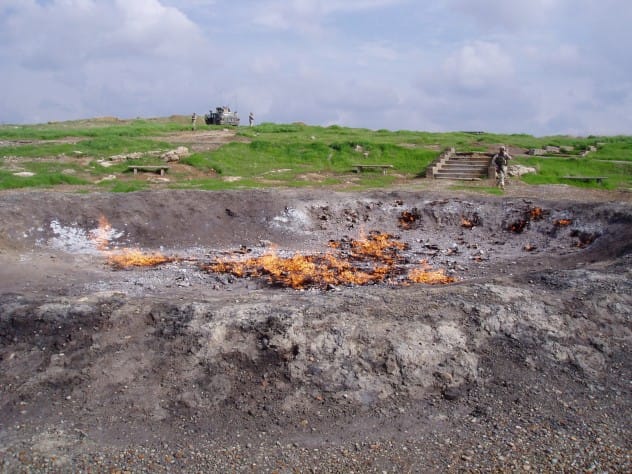
Located in an enormous oil field in Iraq, the eternal fire of Baba Gurgur is fueled by natural gas percolating through the rocks. Local legends claim shepherds used these fires to warm their sheep, and pregnant women visited hoping for a boy.
This natural fire may be the origin of the Biblical story of the “fiery furnace.” The flames are visible for miles, but visitors are warned to stay upwind due to deadly hydrogen sulfide gas emissions.
Jwalamukhi Temple
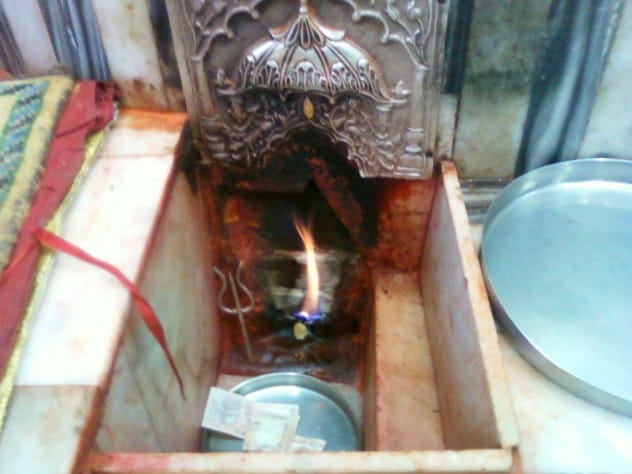
The Hindu legend of the Jwalamukhi Temple’s eternal flame tells of Prajapati Daksha’s humiliation of his daughter Sati, who then set herself on fire. Her lover, Lord Shiva, scattered her body parts, with her tongue landing at the temple and manifesting as a flame.
Dedicated to the Goddess of Light, the temple features eternal blue flames from burning natural gas. Thousands of pilgrims visit each year, bringing gifts to the deity represented by the flame itself.
Which of these eternal flames fascinates you the most? Leave your comment below!


